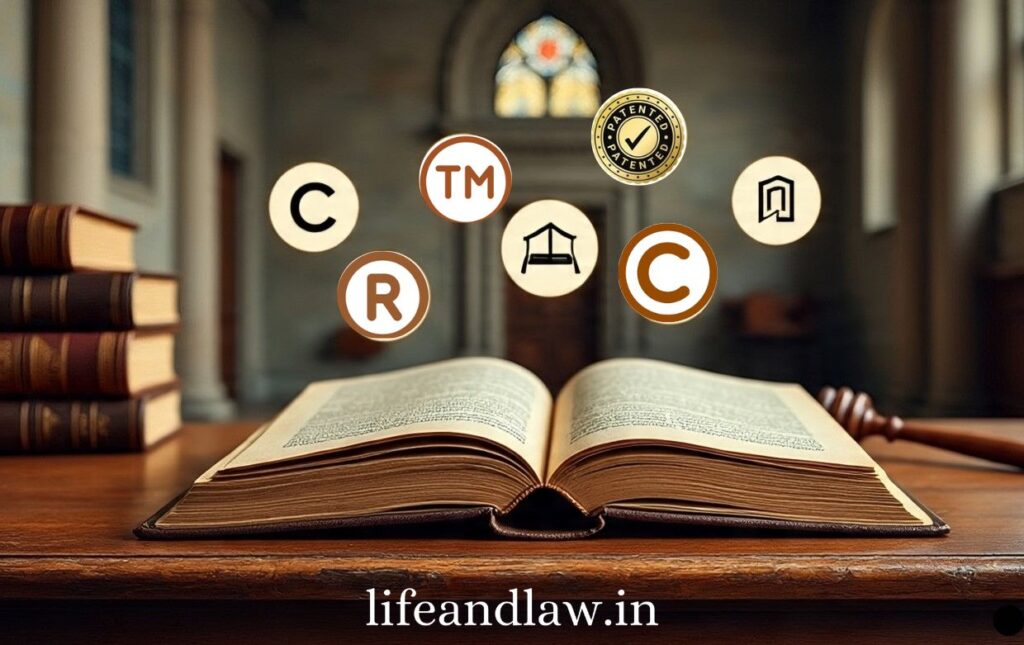Trending

Intellectual property rights are an important concern in the modern day since it promotes innovation and protects creativity. In today’s technologically advanced and competitive world, an abundance of fresh concepts, research, literature, music, designs, and brands are emerging. However, the possibility of illegal intervention or theft of such creations has grown. Many times, fresh research or artwork is utilized by others without sufficient legal protection, resulting in economic and social damage for the original artist.
In this article, we will look at the necessity of intellectual property protection, the numerous legal techniques used to do so, and the steps you may take to keep your ideas safe.
Intellectual property refers to an individual or institution’s legal rights to their unique and inventive ideas. It encompasses study, literature, music, artwork, innovations, and industrial design.
Intellectual property rights (IPR) are the legal rights granted to an individual or organization over unique concepts for a defined time period. These rights offer economic and legal protection based on their inventiveness.
Intellectual property rights can take many different forms and protect a wide range of creative or commercial properties. The primary types are the following:
Patents are rights given for inventions. A patent can be used to protect a novel product, process, or machine that you have produced. In India, patents are awarded for 20 years.
Example: A novel sort of medicine and new technology in an electronic device.
A trademark is a brand name, emblem, symbol, or phrase that is associated with a company’s product or service. These rights are critical to maintaining brand identification. Trademark registration is valid for ten years and can be renewed thereafter.
Example: Apple logo and Nike’s ✔ tick mark.
Copyright applies to literature, music, art, computer software, films, and periodicals. It grants the creator exclusive rights to reproduce, distribute, and exploit their work. In India, copyright is preserved for 60 years following the creator’s death.
Example: Songs, literature, movies, and software code.
Industrial design rights refer to a product’s particular appearance. This right protects a product’s unique shape, design, or structure. This right is valid for ten years and can be renewed for five years.
Example: The specific design of a mobile phone and the structure of a luxury car.
A Geographical Indication (GI Tag) is a right granted to a product based on its quality in a specific geographic region. It is associated with traditional knowledge and local resources in that location. This permission is granted for ten years and may be renewed.
Example: Darjeeling tea, Paithani sari, and Alphonso mango.
The primary purpose of intellectual property rights is to protect the unique ideas of creative individuals and industries. Some of its main advantages are as follows:
Preserves creative research and products.
Ensures adequate economic compensation for researchers and artists.
Maintains the unique identity of the business and brand.
Promotes new discoveries and research.
Stops illicit copying and theft.
Register Your IP: Register for patents, trademarks, copyrights, or design rights in a timely manner to protect your inventions, brand, creative works, and designs. For further information, please visit IP India.
Get Legal Advice: Consult with legal IP lawyers to determine the best protection approach and manage documentation. Adv. Abdul Mulla can be reached at www.asmlegalservices or www.lifeandlaw.in.
Use NDAs: Sign a Non-Disclosure Agreement before disclosing sensitive ideas or research to avoid misuse.
Digital Protection: Use copyright, watermarks, encryption, and strong passwords to protect your digital content and information.
Send a Legal Notice – Send a notice to the infringing party via a lawyer, demanding that the violation be stopped.
File a Lawsuit – If the infringement continues, file a lawsuit and seek an injunction.
Claim for Damages – In the event of financial loss, seek recompense through the courts.
Cyber Crime Complaint – In the event of digital infringement, register a complaint with cyber police.
Alternative Dispute Resolution (ADR) – Try to settle the matter through mediation or arbitration.
Use IP Protection Systems – Ensure that patents, trademarks, and copyrights are registered and renewed on time.
Registering intellectual property rights to protect your ideas is critical. Patents, trademarks, copyrights, and design rights can help you legally protect your ideas and research. Online security and legal protection have become critical in the digital era, as the risk of information theft has grown.
Simply registering isn’t enough; you also need to develop suitable legal tactics to minimize future difficulties. In cases of infringement, prompt action must be taken. To ensure complete protection of your ideas, you must speak with a skilled legal practitioner. In such cases, contacting Adv. Abdul Mulla, the author of this article, at www.asmlegalservices or www.lifeandlaw.in, can be beneficial.
Adv. Abdul Mulla (Mob. No. 937 007 2022) is a seasoned legal professional with over 18 years of experience in advocacy, specializing in diverse areas of law, including Real Estate and Property Law, Matrimonial and Divorce Matters, Litigation and Dispute Resolution, and Will and Succession Planning. read more….
Copyright BlazeThemes. 2025